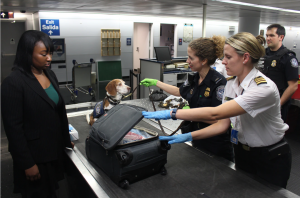Knowing that pets shouldn’t be exposed to high temperatures, make sure not to leave them in your vehicle on vacation.
You have already booked a flight overseas or simply set up a picnic outside of your hometown and are now wondering what you should do with your pets? Well, leaving it to some irresponsible neighbors isn’t the best decision. Instead, you can always embark on a trip with your small family member and make the most of your journey. But, how can you manage to travel with your pet safely and comfortably? These are five things for you to know before you actually hit the road.
#1 Make Sure to Take the Pet’s Traveling Kit
Sometimes, we tend to pack all kinds of unnecessary things in our luggage that are either unused or wasted throughout a journey, and instead forget about medications for ourselves and our dear pets. Neglecting this is not the best way to go because most accidents occur when you least expect it. So, for avoiding or even preventing some troubles, better take your pet first-aid kit. You can make one home-made or buy a pre-made kit to carry with you on trips. There, you can store medication that helps to remove ticks and bugs or heal some wounds and bites. The chance of some allergic reactions or animal bites when you travel is much higher than that when your pet is at home. Play it safe and carry the pet’s traveling kit whenever you travel a long distance.
#2 Do not Leave Your Animal Alone in a Parked Car or Truck
Knowing that pets shouldn’t be exposed to high temperatures, make sure not to leave them in your vehicle on vacation (just as you wouldn’t at home while running errands). If you make a cross-country move or adventure, there might be some precautions you need to follow. During a piping hot day, a car might reach 120 degrees within just 30 minutes with all four windows opened 1 to 2 inches. Whereas, in a cold period, it might become a real fridge that turns your pet-passenger into an animal freezing to death. Can you just imagine how the pet’s body gets overheated in no time? Do not put your lovely pet at risk like this and let it go along with you if you decide to stop for a while.
#3 Implant Your Pet With a Microchip With Up-to-Date Information
Traveling from one place to another is usually a huge stress for both people and animals. That is why you should be prepared for your pet to be anxious during the trip and possibly get lost. In this worst case scenario, it is better to quickly contact the microchip company and immediately determine the location of your pet. So, before you hit the road, make sure your pet wears special identification tags with your relevant contact information and has a microchip with a specific number and your phone number. There are numerous considerations you should take into account before starting up your journey but once you do the preparation properly, your trip will become unforgettable.

#4 Bring a Health Certificate and Other Necessary Documentation
Many countries and even interstate crossings sometimes require the health certificate signed by an accredited veterinarian. This report should include your pet’s medical history proving the pet’s rabies vaccination and infectious disease records. After your loving pet has been examined in the vet hospital and none of the unsatisfactory reasons for not traveling abroad are found, you are free to begin your journey. When packing your baggage and picking all the documents for yourself, keep in mind that international travels often require USDA endorsement of the certificate for your pet, too.
#5 Book the Pet-Friendly Place
When choosing what hotel or motel you are going to stay in, think about your pet, too. The thing is that many accommodations and their hosts set the limits on pets of a certain weight. So, you should arrange it in advance and discuss this issue right when you begin your reservation. Some can easily allow you in, some may require you to bring a portable kennel, whereas some will refuse to accept you as a guest with the pet at all. That’s something that needs to be sorted out before you settle down. But, of course, there might be some other case. For instance, you decide to have a more adventurous trip and set a camp. If you have set up your mind on staying at a park, mountains or so make sure to check these places out and clean everything up once you leave.
Conclusion
Traveling is certainly a very stressful time and it is even more nerve-wrecking and energy-demanding when you have your animal companions around. However, with well-though preparation like this you can ensure a safe and comfortable trip for everyone.


Join the conversation!